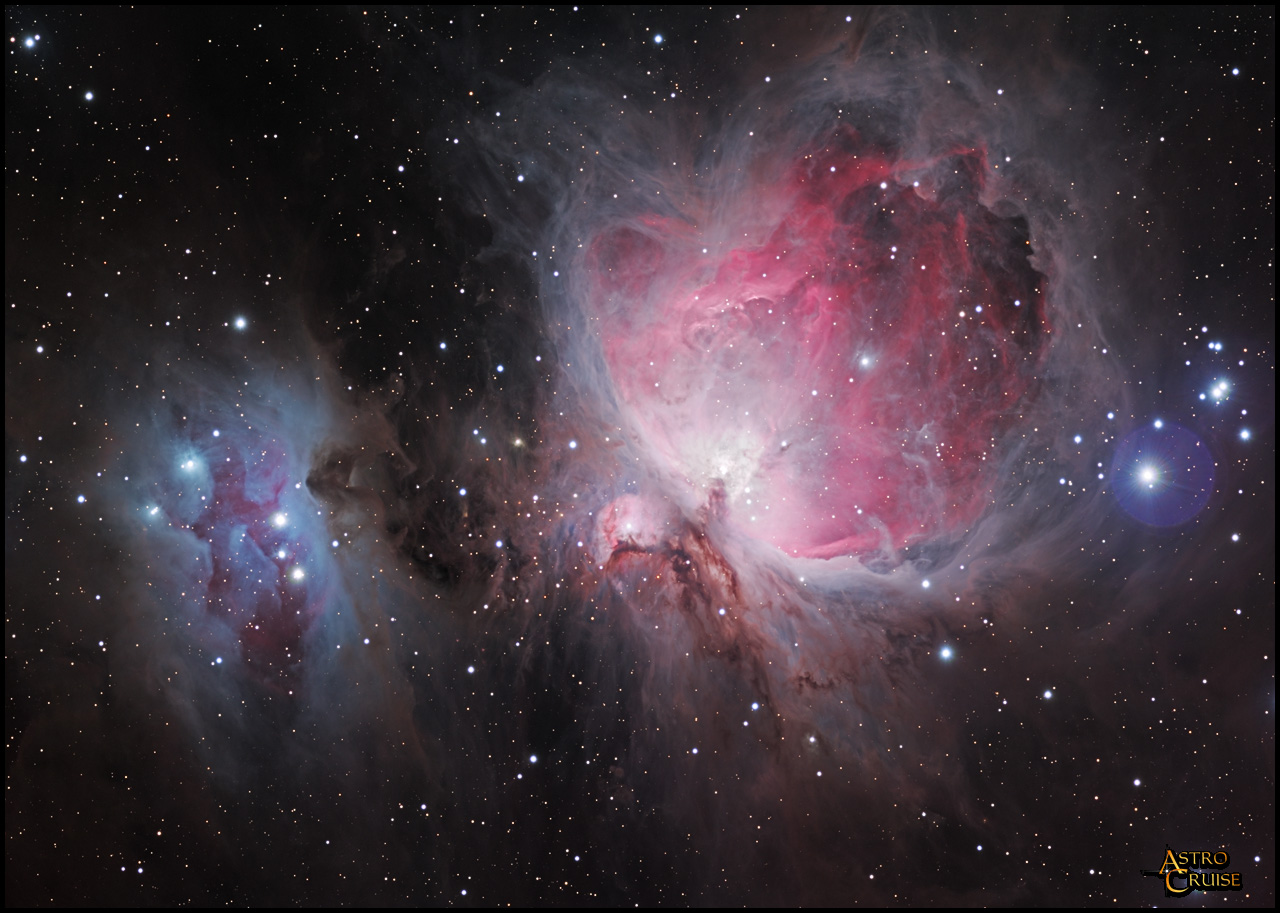
 |
Object Data: The Great Orion Nebula (M42, NGC 1976) and NGC 1977 to the north (left in this photo) are located in the 'Sword' part of the constellation of Orion, just below Alnitak, the Eastern-most of the three stars that comprise Orion's belt. As well as being the brightest, M42 is perhaps the most famous and most photographed nebula in the night sky. With a visual magnitude of 4.0 it has undoubtedly been observed since antiquity but its nebulous nature was probably not recognised until telescopes were first turned on it. The famous comet hunter Charles Messier catalogued it in October 1764. Approximately 1,500 light years distant, M42 is a very active and turbulent cloud of gas and dust and an important star forming region of particular interest to astronomers. There are many hot young stars (most notably the Trapezium stars) which fuel the dense swathes of surrounding gas, causing it to ionize and produce the red emission glow. M42 has a particularly complex range of of emission sources as part of it's spectrum, as well as a strong component of reflected broadband light, which probably accounts for the wide range of visible colours. To the north (left in this photo) is the complex region of combined emission and reflection nebulae consisting of NGC 1973, 1975, and 1977 - the Ghost Nebula as I prefer to call it, with its mysterious 'spirit-like' figure floating through the clouds - but also known as the 'running man'. In my opinion it is one of the most intriguing and beautiful objects in the entire night sky.
Date: 13-14/12/2007
Location: Southern France
Conditions: Calm, moderate dew, transparency=8, seeing=7
Optics: Astro-Physics 155 EDF f/7 with 4" focuser and integral field flattener working at f/7
Mount: AP 900 GTO on Portable Pier
Camera: SBIG STL-11K, SBIG LRGBC filter set, -30°C
Guiding: Integral STL-11K autoguider
Exposure: Normal LRGB Seq: 24x 10 minutes; 6x 10 : 6.5 : 10 minutes (binned 2x2). Short LRGB Seq: 11x 1 minute; 10x 1 : .65 : 1 minutes (binned 2x2).
Processing: Image acquisition and initial processing using Maxim DL, subsequent processing in RegiStar and Photoshop.Notes: After looking carefully at the STL-11K QE curve and the RGB filter responses I decided that the SBIG recommended RGB ratio of 1 : 0.65 : 1 should be most accurate. The results of this and other image sets endorsed this - even so the images were biased a little towards the green and I compensated for this in Maxim Combine Color with RGB weights of 1.07 : 0.93 : 1. I did careful comparisons of the different combine algorithms and decided to use SD-Mask for all image calibration and combine operations as it seemed to give best results overall, though I saw little difference between this and Sigma Clip.
|
|
|
|